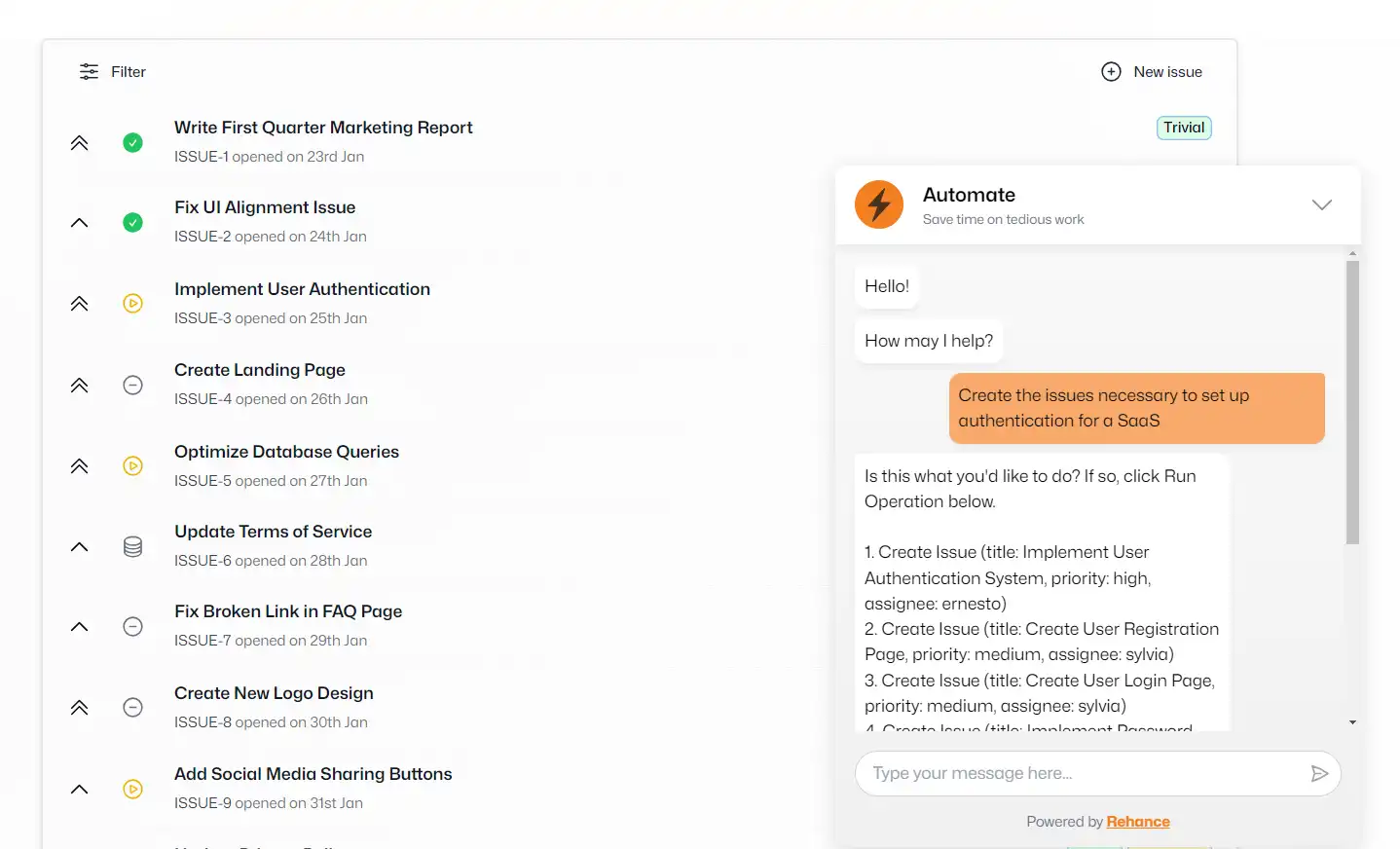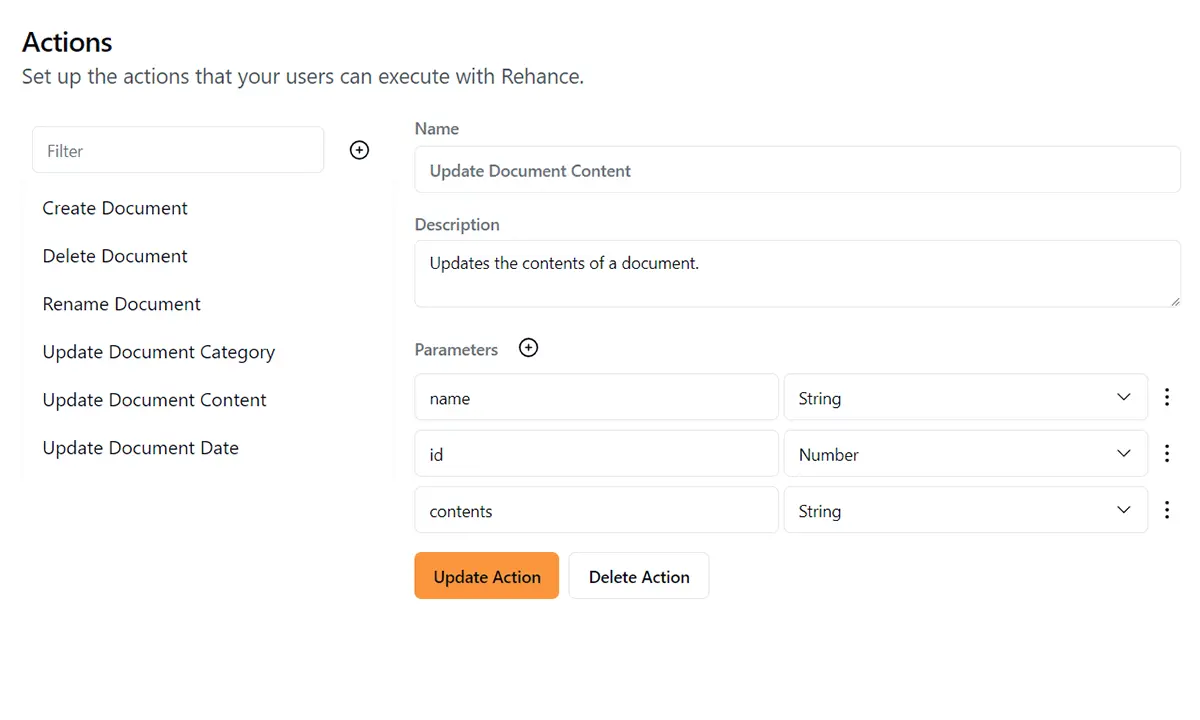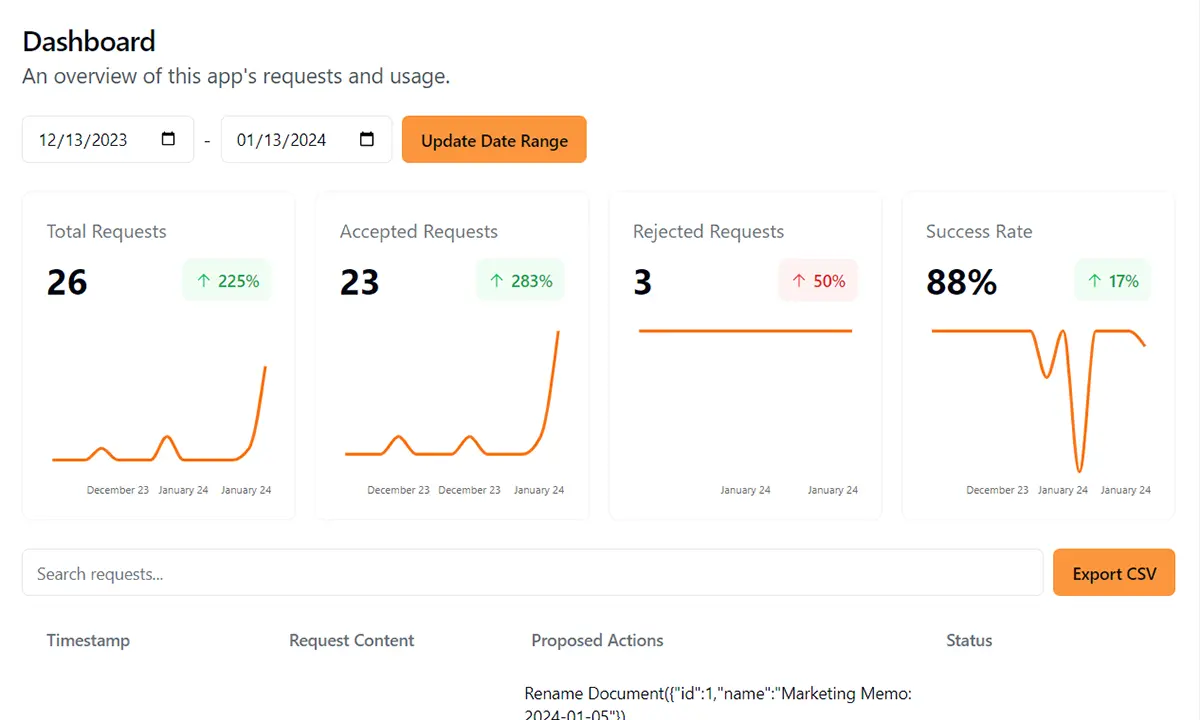Let's Get Started
In the fast-paced world of SaaS applications, user interaction plays a crucial role in shaping the overall user experience. The emergence of AI-powered chat interfaces has revolutionized the way users engage with software, offering a more intuitive and personalized approach to interaction. This article explores the impact of AI-powered chat interfaces on SaaS user interaction and delves into the implementation, benefits, and measurement of their effectiveness.
Key Takeaways
- AI-powered chat interfaces enhance user engagement and satisfaction in SaaS applications.
- The integration process of AI-powered chat interfaces in SaaS requires careful planning and execution.
- Metrics for success in measuring the impact of AI-powered chat interfaces include user engagement, retention, and task completion rates.
- User feedback and iterative improvement are essential for optimizing AI-powered chat interfaces and ensuring continuous enhancement of user experience.
Understanding AI-Powered Chat Interfaces

The Evolution of User Interaction
The evolution of user interaction has been shaped by advancements in technology, leading to a more dynamic and personalized user experience. Conversational interfaces have become a key element in this evolution, offering a more natural and intuitive way for users to interact with software applications. This shift from traditional interfaces to chat-based interactions has redefined the user experience landscape, emphasizing the importance of real-time communication and instant access to information. As a result, users are now able to engage with SaaS platforms in a more fluid and responsive manner, enhancing their overall productivity and satisfaction.
Benefits of AI-Powered Chat Interfaces
AI-powered chat interfaces have transformed the way users interact with SaaS platforms. By providing real-time assistance and personalized recommendations, these interfaces enhance user satisfaction and engagement. Additionally, they contribute to a more seamless user experience, leading to increased user retention and loyalty. The benefits of AI-powered chat interfaces include:
- Instant access to support and information
- Proactive assistance based on user behavior
- Enhanced user engagement through personalized interactions
- A way to execute tasks in the application without clicking through menus
Implementing AI-Powered Chat Interfaces in SaaS

Integration Process
The integration process of AI-powered chat interfaces in SaaS involves careful planning and seamless execution. It is crucial to ensure that the interface is task-oriented (i.e., it maps user messages to specific functionalities or features within the application). This approach enables users to execute tasks in the application without clicking through menus or navigating complex workflows. This means the interface must have access to the user's data and preferences, as well as the features and functionalities of the application.
For more information on how to set up an AI-powered chat interface, check out Rehance.
User Adoption and Engagement
Implementing AI-powered chat interfaces in SaaS requires a strategic approach to ensure user adoption and engagement. It is essential to provide clear and concise communication about the benefits and functionalities of the chat interface — namely, that it is not a useless sales or customer support bot!
Improving User Satisfaction
AI-powered chat interfaces have the potential to improve user satisfaction by executing tasks for the user using just their plaintext request. This approach eliminates the need for users to search for features or browse tutorials when they're stuck — they can simply ask the chat interface to perform the task for them. This level of convenience and efficiency contributes to a more seamless user experience, leading to increased user satisfaction.
Additionally, the ability to anticipate user needs and proactively address concerns contributes to a more seamless and fulfilling user experience. This level of personalization fosters a deeper connection between users and the SaaS platform, ultimately enhancing user satisfaction.
Measuring the Impact of AI-Powered Chat Interfaces

Metrics for Success
When measuring the impact of AI-powered chat interfaces, it is crucial to focus on user engagement and task completion rates. Understanding how users interact with the chat interface and whether it's actually helping them get stuff done can provide valuable insights for improvement. Additionally, gathering qualitative feedback from users through surveys and interviews can uncover specific pain points and areas for enhancement. It's important to continuously iterate and improve the chat interface based on user feedback and usage data. This iterative approach ensures that the chat interface evolves to meet the changing needs and preferences of users.
Conclusion
In conclusion, the integration of AI-powered chat interfaces has the potential to revolutionize SaaS user interaction. By leveraging generative AI, entrepreneurs and web developers can significantly reduce churn and enhance user satisfaction. The ability to map user messages to specific functionalities or features in a single interaction not only improves efficiency but also enhances the overall user experience. This innovative approach, which surpasses traditional conversational chatbots, holds the promise of transforming the landscape of SaaS applications. The future of SaaS user interaction is poised for a paradigm shift, with AI-powered chat interfaces at the forefront of this transformative journey.
Frequently Asked Questions
How do AI-powered chat interfaces revolutionize user interaction in SaaS?
AI-powered chat interfaces revolutionize user interaction in SaaS by providing a faster and more efficient way for users to execute functionality or features within the application. Unlike traditional conversational chatbots, AI-powered chat interfaces map a single message from the user to the specific action the user wants to perform, resulting in improved user satisfaction and reduced churn.
What are the benefits of implementing AI-powered chat interfaces in SaaS?
The benefits of implementing AI-powered chat interfaces in SaaS include reduced churn, improved user satisfaction, faster execution of user requests, enhanced user experience, and increased user engagement. These interfaces provide a seamless and efficient way for users to interact with the SaaS application, leading to higher retention rates and better user outcomes.
How can SaaS companies integrate AI-powered chat interfaces into their applications?
SaaS companies can integrate AI-powered chat interfaces into their applications by leveraging generative AI to map user messages to specific functionalities or features within the application. This integration process involves training the AI model to understand user intent and execute the corresponding actions, resulting in a seamless and intuitive user experience.
What factors contribute to user adoption and engagement with AI-powered chat interfaces?
User adoption and engagement with AI-powered chat interfaces are influenced by factors such as the speed and accuracy of the interface in executing user requests, the level of personalization and customization offered to users, and the overall improvement in user satisfaction. When users experience the benefits of efficient and personalized interactions, they are more likely to adopt and engage with the chat interface.
How do AI-powered chat interfaces personalize and customize user interactions in SaaS?
AI-powered chat interfaces personalize and customize user interactions in SaaS by analyzing user preferences, behavior, and historical data to provide tailored responses and recommendations. Through machine learning algorithms, these interfaces adapt to individual user needs, delivering personalized experiences that enhance user satisfaction and engagement.
What metrics can be used to measure the impact of AI-powered chat interfaces in SaaS?
Metrics for measuring the impact of AI-powered chat interfaces in SaaS include user retention rates, user satisfaction scores, average response time, user engagement metrics, and the frequency of successful user interactions. Additionally, user feedback and iterative improvement play a crucial role in assessing the effectiveness of AI-powered chat interfaces and identifying areas for enhancement.
